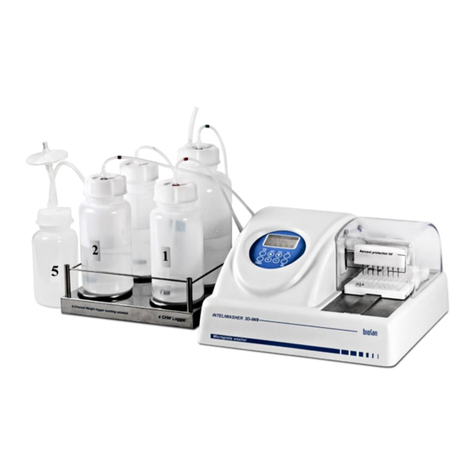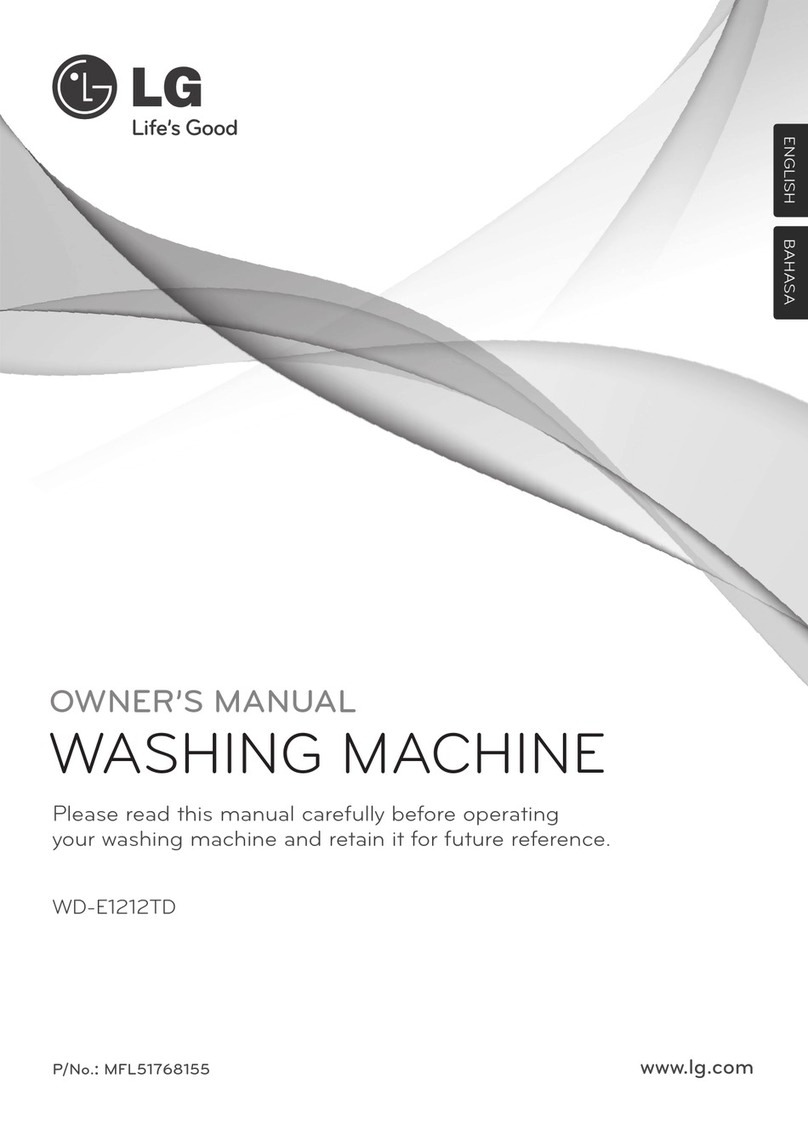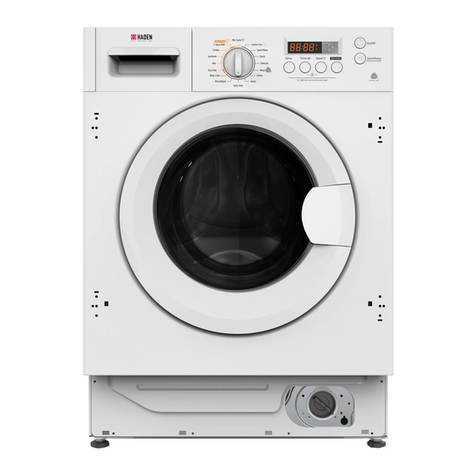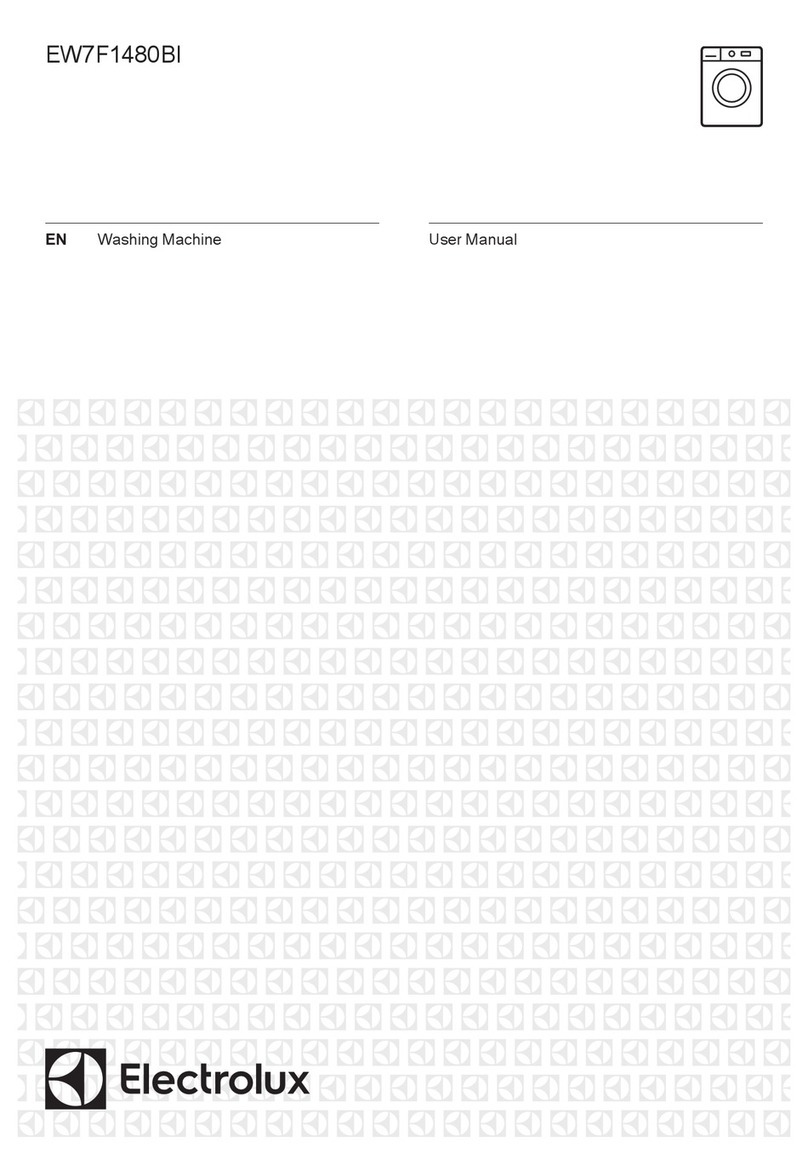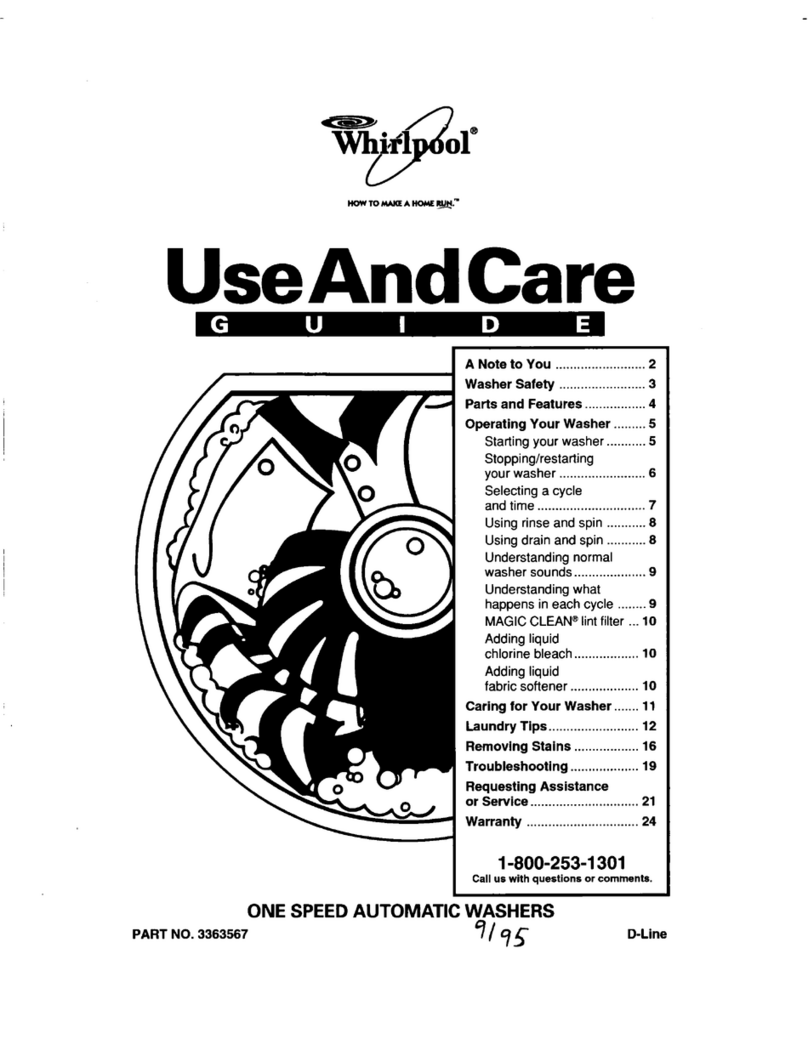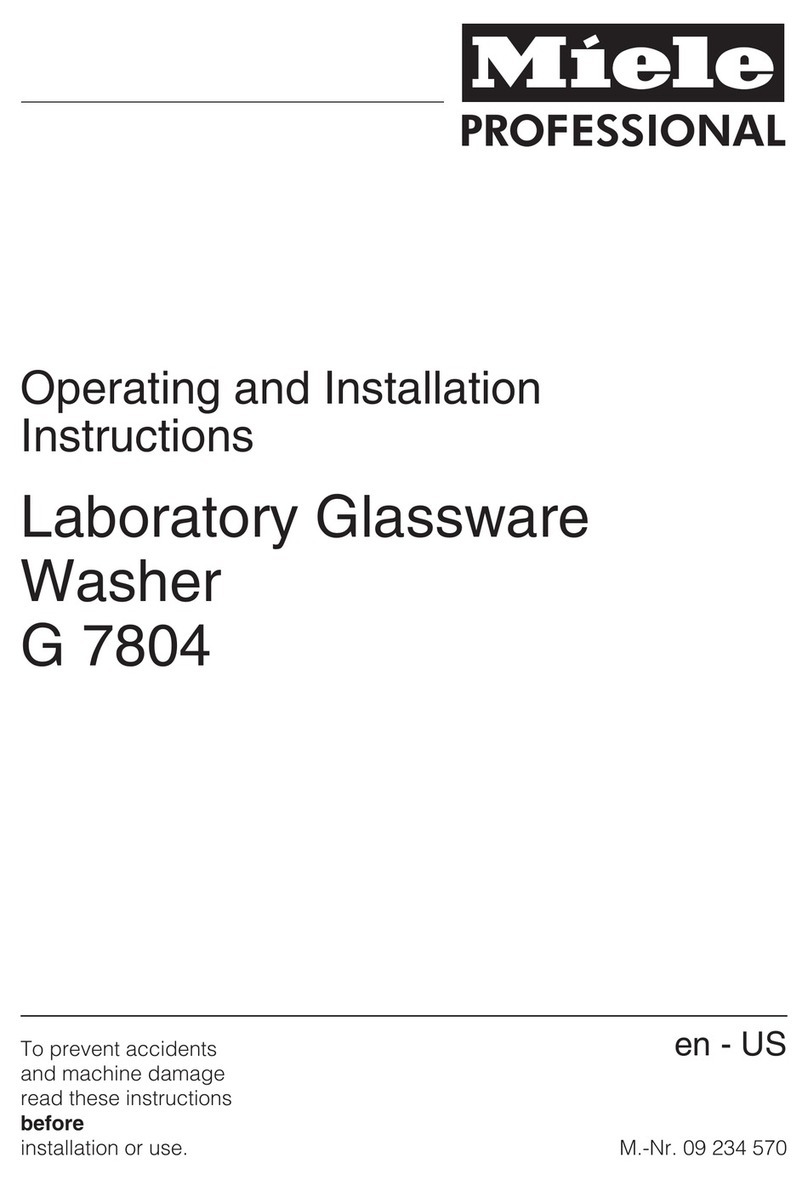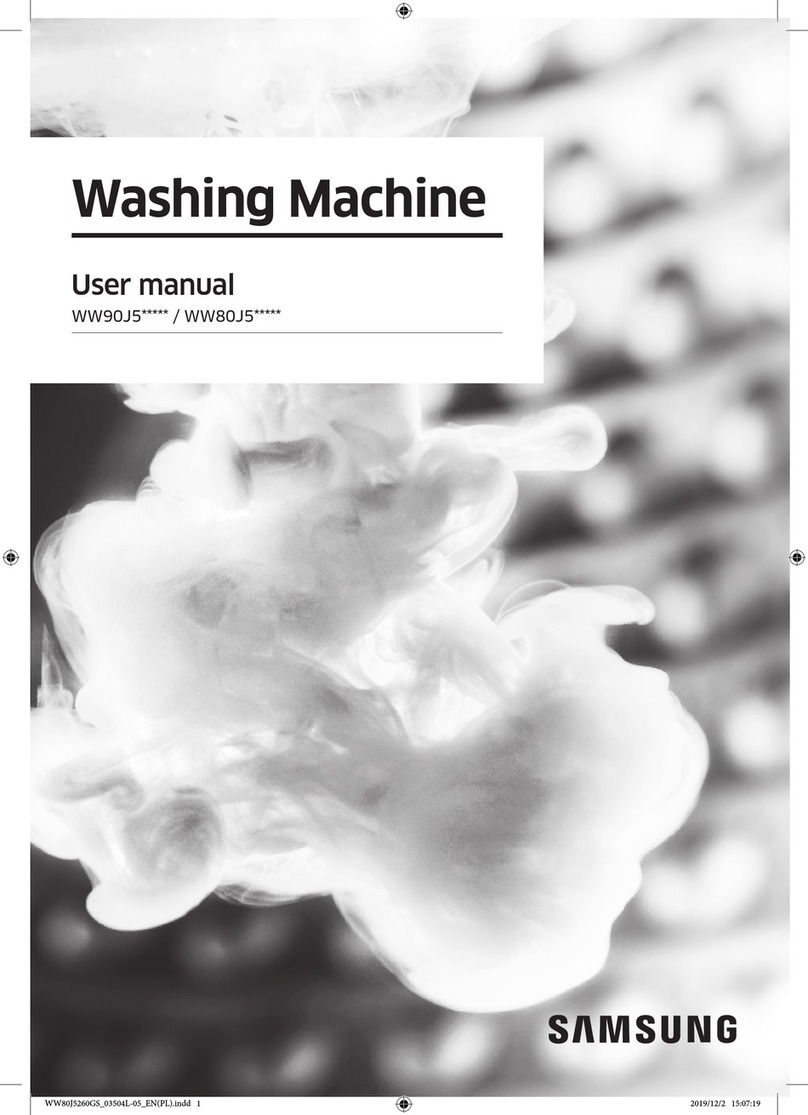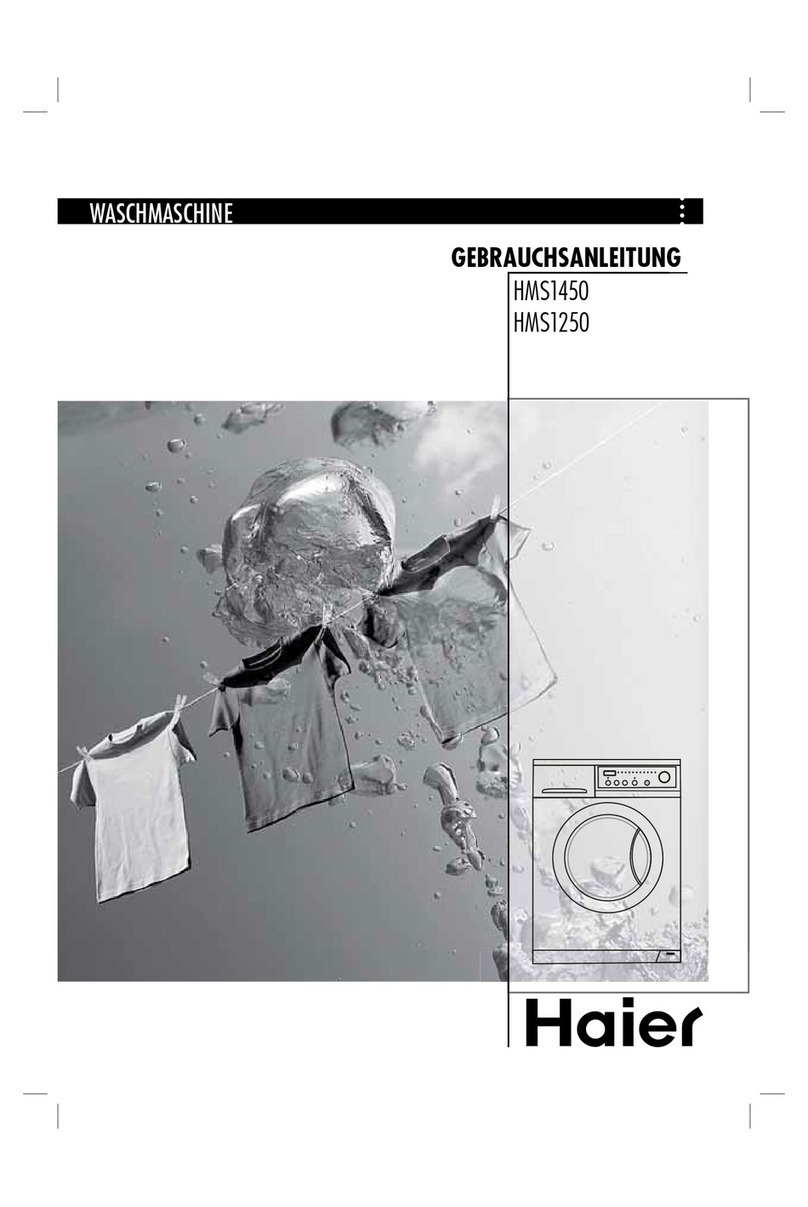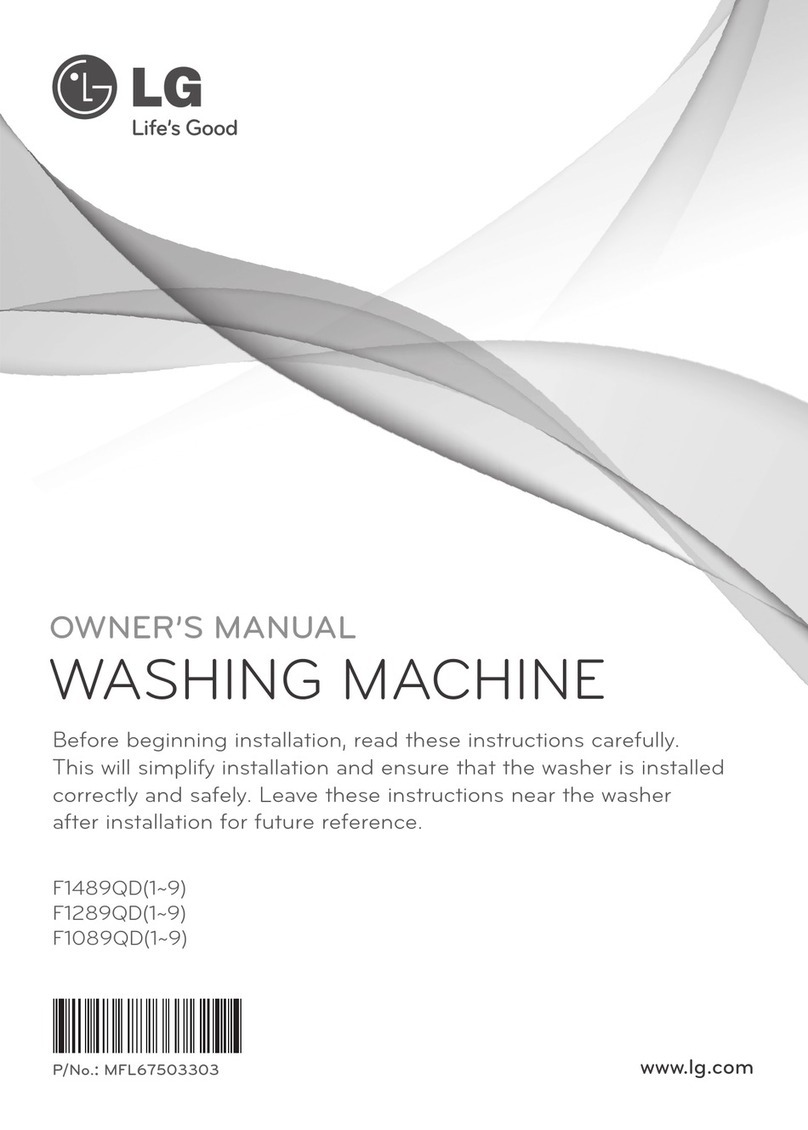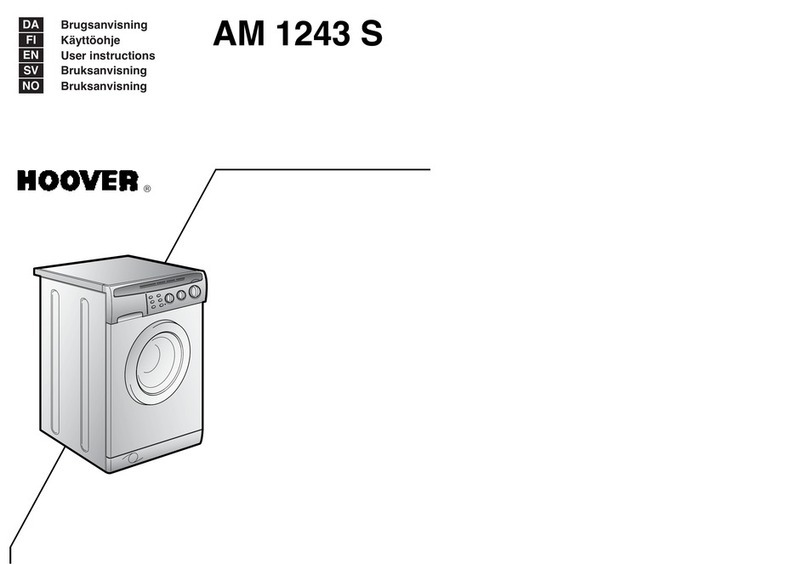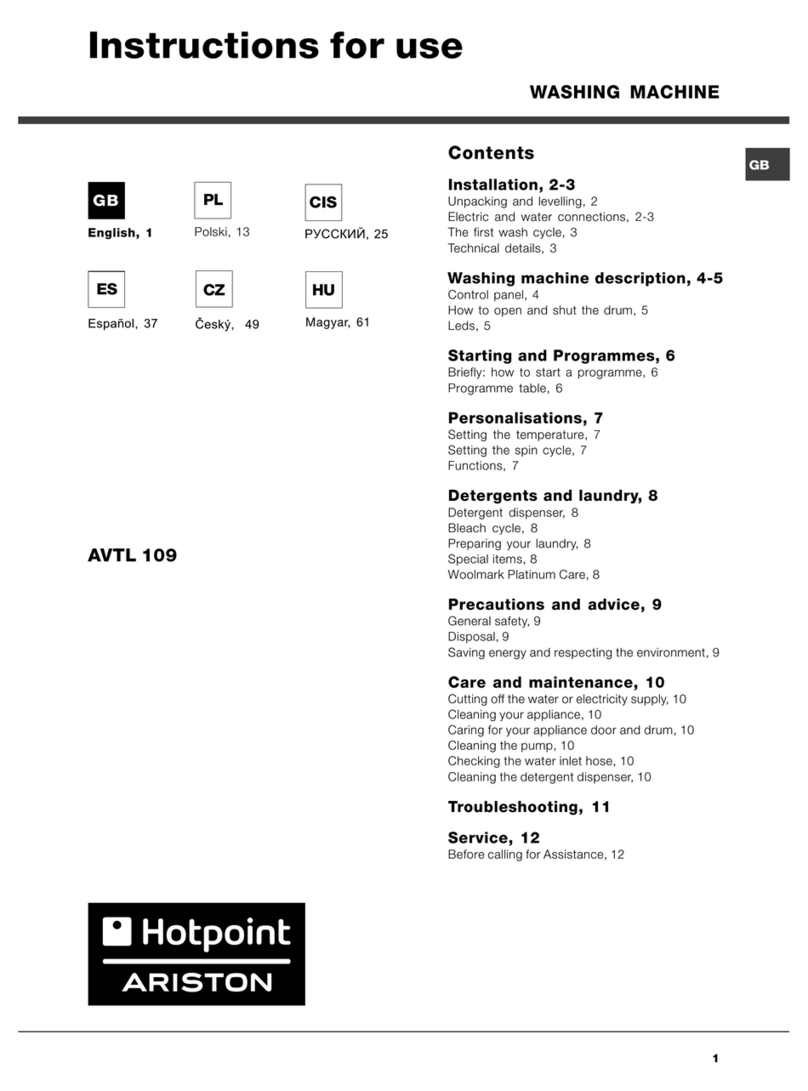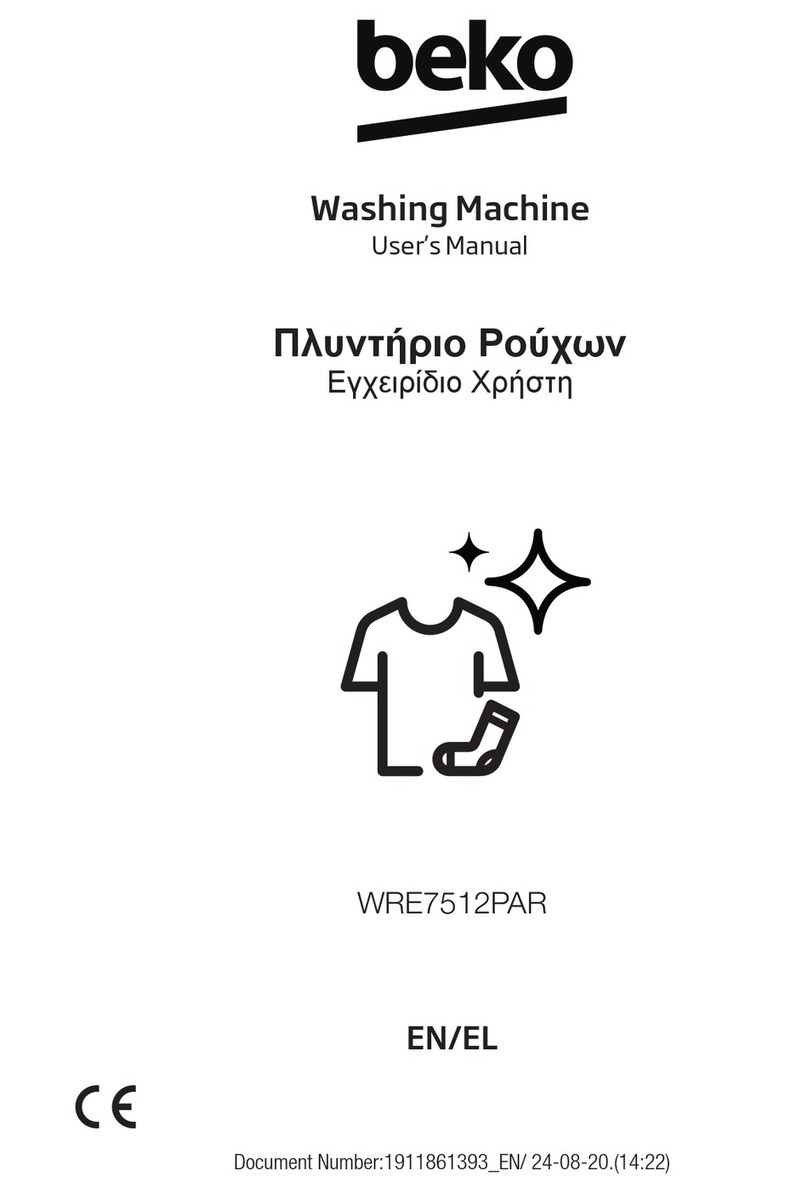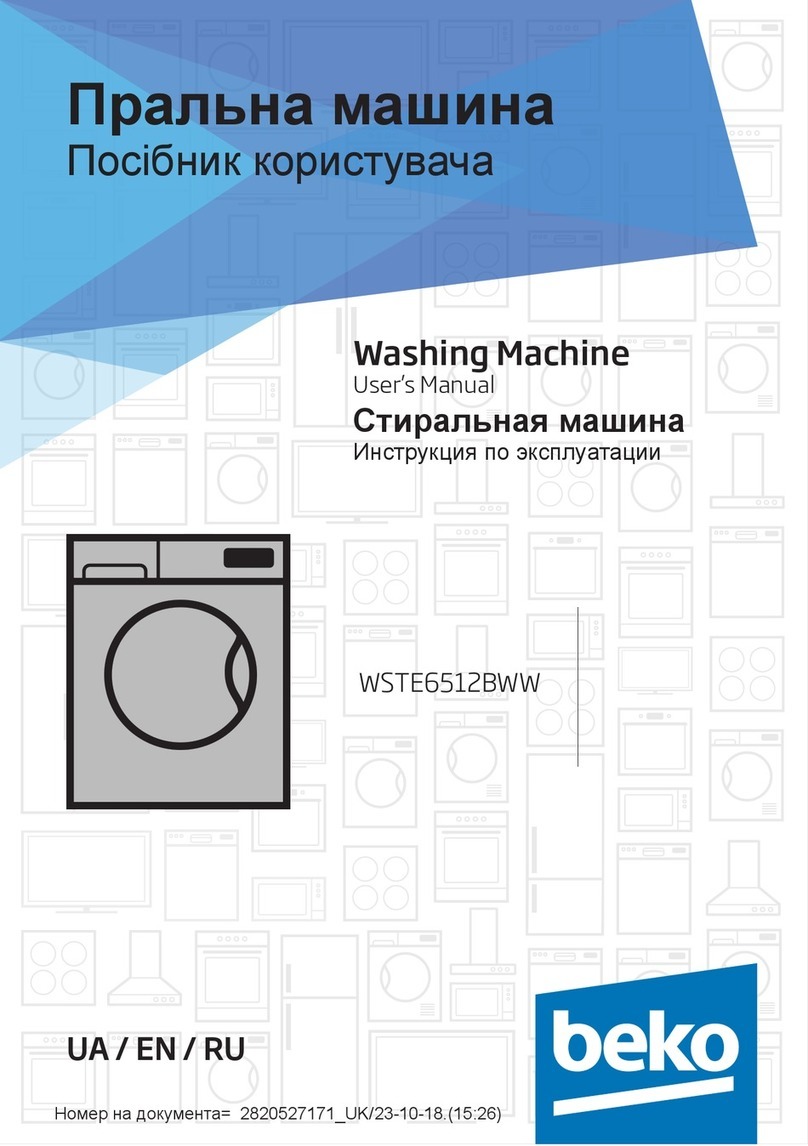Biosan IW-8 User manual


2

3
Contents
1. About this edition of user instructions.......................................................................3
2. Safety precautions ...................................................................................................4
3. General information..................................................................................................6
4. Getting started..........................................................................................................7
5. Operation ...............................................................................................................11
6. Operation closedown .............................................................................................15
7. Program error messages........................................................................................16
8. Specifications.........................................................................................................16
9. Ordering information ..............................................................................................17
10. Maintenance and troubleshooting..........................................................................18
11. Warranty.................................................................................................................21
12. Glossary.................................................................................................................22
13. EU Declaration of conformity..................................................................................23
1. About this edition of user instructions
The current edition of the user instructions applies to the following models and
versions of plate washers:
IW-8, Intelispeed Washer...................................................................version V.4AW

4
2. Safety precautions
Caution! Make sure you have fully read and understood the present Manual
before using the equipment. Please pay special attention to sections
marked by this symbol.
2.1. GENERAL SAFETY PRECAUTIONS
The protection provided can be ineffective if the operation of the appliance does not
comply with the manufacturer's requirements.
Save the unit from shocks and falling.
After transportation or storage and before connecting it to the electric circuit, keep the
unit under room temperature for 2-3 hrs.
Store and transport the unit at ambient temperatures between -20°C and +60°C and
maximum relative humidity of 80%.
Before diagnostics, study carefully the possibilities and operation procedures of the
unit in order to obtain reproducible and credible results. Check any unclear issues
with the supplier.
Do not leave the operating unit unattended for an extended period.
Change the bottles or connecting tubes only when the unit is switched off.
In case of doubt about the quality and uniformity of the completed washing program,
disregard the results obtained and repeat the washing procedure.
Accuracy of the obtained testing results depends on the quality of the microplate
rinsing procedure. To assure correctness of the rinsing procedure, regularly exercise
visual control over reproducibility of liquid volume dosing.
Before using any cleaning or decontamination methods except those recommended
by the manufacturer, check with the manufacturer that the proposed method will not
damage the equipment.
Do not make modifications to the design of the unit.
2.2. ELECTRICAL SAFETY
Connect only to an external power supply unit with voltage corresponding to that on
the serial number label. Use only the external power supply unit provided with this
product.
Do not plug the power supply unit into an ungrounded power socket, and do not use
an ungrounded extension lead.
Ensure that the switch and external power supply connector are easily accessible
during use.
Disconnect the unit from the mains before moving.
If liquid penetrates into the unit, disconnect it from the mains and do not use it until it
is checked by a repair and maintenance technician.
Do not operate the unit in premises where condensation can form. Operating
conditions of the unit are defined in section 8. Specifications.

5
2.3. DURING OPERATION
Do not operate the unit in environments with aggressive or explosive chemical
mixtures. Please contact manufacturer for possible operation of the unit in specific
atmospheres.
Do not operate the unit if it is faulty.
Always have the cover protecting against aerosol spread (hereinafter protective
cover) installed during operation.
Do not operate the unit if any of the needles is clogged or malfunctions.
Never touch the needles or place fingers or other parts under the needles during
operation. Manifold needles are sharp and can cause injury.
Always switch off the unit before changing the manifold.
If liquid spills on the guiding rail, stop the operation, clean and wipe the surface dry.
Do not allow the waste bottle to overflow the maximum level during operation (there
is a mark on the side surface of the bottle). Take necessary precautions utilizing
waste liquid in accordance with general laboratory standards.
2.4. AFTER OPERATION
Сarry out the cycle of system washing with distilled water and do not dry. This will
keep the system in permanent operation condition. Follow instructions outlined in
section 6. Operation closedown of this manual.
Clean the guiding rail under the platform and wipe it dry to prevent oxidation layer
formation and to prolong working life of the unit.
2.5. BIOLOGICAL SAFETY
It is the user’s responsibility to carry out appropriate decontamination if hazardous
material is spilt on or penetrates into the equipment.
In diagnostic researches, potentially dangerous biological materials can be used.
When working with such materials, always use protectiveclothing and eye protection.
Always have the protective cover installed during operation.

6
3. General information
Intelispeed Washer IW-8 is designed for washing of standard flat-bottom 96-well
plates during IFA, etc., in diagnostical laboratories. IFA is also performed in other areas,
including scientific research. The unit is fully programmable ensuring multi-step solution
ripening, aspiration (aspiration, combination of aspiration/liquid dispensing and soaking, as
well as soaking cycle during a particular period of time).
Standard version is supplied with 8-channel manifold for dispensing/aspiration, 3
channels with 3 bottles for washing and rinsing solutions and 2 bottles for waste and aerosol
collecting.
The unit has 101 user-defined editable programs (from 00 to 100).
Optional 4-channel washing solution weight logger 4CHW Logger is available. After
connecting it to IntelispeedWasher IW-8, the unit provides automatic control of reagent total
volume in all bottles that is necessary for washing and waste collecting and estimates the
volume of reagents necessary for washing.
Microbiologic suction filter eliminates risks of contamination caused by bacteria,
viruses, and infected particles from patient. Such contamination can be distributed by suction
pump or central vacuum units. Microbiological suction filter is hydrophobic and has very high
bacterial efficiency –up to 99.99% of particles bigger than 0.027 micrometres (which are
smaller than Hepatitis A, B and C).
The unit includes:
washing mode;
rinsing mode;
double aspiration;
additional solution mixing (shaking) mode during time gap between two work cycles;
soaking mode;
possibility to use plates of different manufacturers. This is ensured by automated
plate setup (adjusting to different depths of plate wells);
round-bottom plate and strip washing mode;
user-defined programs with adjustable parameters;
automatic storing of work programs.

7
4. Getting started
4.1. Unpacking. Remove packing materials carefully and retain them for future shipment
or storage of the unit. Examine the unit carefully for any damage incurred during
transit. The warranty does not cover in-transit damage.Warranty covers only theunits
transported in the original package.
4.2. Complete set. Numbers in the first column correspond to numbers on Figure 1.
#
Name
Quantity
1
IW-8 Intelispeed washer
1 piece
2
Platform for plates
1 piece
3
Manifold
1 piece
4
Protecting cover
1 piece
5
External power supply
1 piece
6
Tubes (outside/inside diam./length 6/3/600 mm)
5 pieces
7
Tube for manifold (outside/inside diam./length 3.2/1.6/400 mm)
1 piece
8
Tube for manifold (outside/inside diam./length 5/3/440 mm)
1 piece
9
Tube for hydrophobic filter (outside/inside diam. 9/6 mm)
1 piece
10
Half-litre bottle with connectors for aerosol collection
1 piece
11
1-litre bottles with sieve filters and connectors for reagents
3 pieces
12
2-litre bottle with connector for collecting of waste liquid
1 piece
13
Hydrophobic filters for half-litre bottle
2 pieces
14
Manifold cleaning set
1 piece
15
Syringe for liquid flushing in hoses
1 piece
16
Power cable
1 piece
17
User instructions, declaration of confirmity
1 copy
18
4-channel washing solution weight logger, 4CHW Logger
on request

8
Figure 1. Complete set
4.3. Storage and transportation.
- During long-term storage, keep the unit and all its accessories in original packaging
in a dry dust-free place.
- If the unit will be subjected to low temperatures, dry the tubes as described in 6.
Operation closedown.
- Use the original packaging for transportation whether transported by air, water or
land.
Attention! We do not accept warranty claims related to damages caused by
improper packaging.
- To pack the unit properly, see 10.8.

9
Figure 2. Unit side and back overview. Setting up
4.4. Setup.
4.4.1. Place the unit on a strong horizontal surface, which can safely support weight of the
unit. To provide optimal ventilation, ensure 100 mm clearance on each side.
Operation conditions are described in the Specification section.
4.4.2. Remove the protecting cover.
4.4.3. Unpack the plate platform.
4.4.4. Place the plate platform on the railing (fig. 2/1) so that the plate holder (flat spring)
faces the rear side of the unit (fig. 2/2). Magnet on the other side of the rail locks the
platform into start position.
Note: If the plate platform is installed improperly, the magnet does not hold
it in place and the platform will be able to move freely. Move the
platform along the railing until the magnets lock. Increase of
resistance to movement indicates that the magnets are locked.
4.4.5. Unpack the manifold.
4.4.6. Install the manifold in the slots of the holder arm (fig. 2/3). Magnets in the manifold
and the holder arm connect and align the manifold.
4.4.7. Connect the manifold inlet connector supplying the liquid and the blue-coloured
Washing Head Dispense connector at the rear panel of the unit (fig. 3/2) with a tube
(fig. 1/7).
4.4.8. Connect the manifold outlet connector and the yellow-coloured Washing Head
Aspirate connector at the rear panel of the unit (fig. 3/4) with a tube (fig. 1/8).
Note: Use the provided labels for marking bottles with washing solutions
and bottles for collecting waste liquid and aerosol.
4.4.9. Connect the #4 green-coloured Waste bottle outlet on the rear side of the unit to the
connector of 2-litre bottle #4 for waste liquid collecting (fig. 3/1).
4.4.10.Place the tube for the hydrophobic filter (fig. 1/9) on the connector of the half-litre
bottle #5, then place the hydrophobic filter on the tube (fig. 1/13). Check that the “IN”
marking on the filter is facing the bottle #5 (fig. 11).
4.4.11.Connect the Waste bottle #4 to the half-litre bottle #5 (fig. 3/10).

10
Figure 3. Assembly diagram
4.4.12.On the rear side of the unit:
4.4.13.Connect the bottle #1 to the inlet connector (#1 –red, fig. 3/3) with a tube (fig. 1/6).
4.4.14.Connect the bottle #2 to the inlet connector (#2 –black, fig. 3/5) with a tube (fig. 1/6).
4.4.15.Connect the bottle #3 to the inlet connector (#3 –white, fig. 3/6) with a tube (fig. 1/6).
4.4.16.Insert the manifold tube (fig. 3/2) into the valve opening (fig. 2/4). Press the valve in
the direction of the arrow and hold the valve while stretching the tube and pulling it
through the opening. Release the valve.
Note: Make sure that all connections are secured tightly.
4.4.17.Install the protective cover. Ensure that all tubes are covered, but are not squeezed.
4.4.18.Place bottles near the unit.
4.4.19.If 4-channel weight logger is included in the kit, remove pads from underside of scale
cups. Place bottles on the 4-channel weight logger according to the numbering.
Connect the RS-232 with the cable to the plug connector on the rear side of the unit
(fig. 3/7).
4.5. Switching on.
Warning! Before connecting the unit to the mains outlet, check that the power
switch (fig. 3/9) is in position O(off).
4.5.1. Connect the external power supply to the power socket (fig. 3/8) on the rear panel of
the unit.
4.5.2. Connect the power cord to the external power supply (fig. 1/16)
4.5.3. Connect the external power supply to the grounded power socket.
4.5.4. Switch on the unit (position I) using the power switch on the rear panel.
4.5.5. When switched on, the unit performs full initialisation cycle and displays the message”
Power on reset”
Note: Full initialisation cycle takes no longer than 5 seconds.

11
5. Operation
5.1. Before starting plate washing:
- Fill the rinsing liquid bottle (#3) with distilled water or appropriate cleansing solution.
- Fill the necessary bottles (#1 and/or #2) with washing solutions.
5.2. Initial parameters of all programs are given in Table 1. All values are adjustable. User
programs can be inputted as 00-100. User programs can be created by changing the
template of the original program.
Table 1. Initial parameters of all user programs.
Program #
00
01
02
03
04
05
06
07
08-100
Parameter
Aspirate
1x400_30
2x400_30
3x400_30
5x400_30
5+1x400_30
Soak 5 min.
Dispense 200
Dispense
NO
YES
YES
YES
YES
YES
YES
YES
YES
Aspirate
YES
YES
YES
YES
YES
YES
YES
YES
YES
Shake
NO
NO
NO
NO
NO
NO
NO
NO
NO
Dispense rate
02
02
02
02
02
02
02
02
03
Aspirate rate
03
03
03
03
03
03
03
03
03
Soak time, s
20
30
30
30
30
30
300
00
00
Shake time, s
-
-
-
-
-
-
-
30
30
Double aspiration
YES
YES
YES
YES
YES
YES
YES
-
YES
Dispensed volume, μl
-
400
400
400
400
400
300
200
300
Aspiration time, ms
1200
600
600
600
600
600
600
-
1000
Final aspirate, ms
-
1200
1200
1200
1200
1200
1200
-
YES
First aspirate
-
YES
YES
YES
YES
YES
NO
-
YES
Wash by rows
-
YES
YES
YES
YES
YES
NO
-
YES
On two channels
-
NO
NO
NO
NO
YES
NO
-
NO
Num.of 1 wash cycles
-
01
02
03
05
05
01
-
03
1 channel
-
01
01
01
01
01
01
01
01
Num.of 2 wash cycles
-
-
-
-
-
01
-
-
-
2 channel
-
-
-
-
-
02
-
-
-

12
5.3. All possible program parameters and their meaning are shown in Table 2.
Table 2. Program parameters and their definitions
Parameter
Value or range
Description
Parameter
Value or range
Description
Dispense
yes/no
Perform fill
Aspirate
yes/no
Perform aspiration1
Shake
yes/no
Plate shaking on the platform during the cycle
Dispense rate
01..03
Speed of liquid filling (100; 200; 300 μl/s)
Aspirate rate
01..03
Speed of liquid aspiration
Soak limit, s
0..300 (step 10 s)
Time between fill and aspiration
Shake limit, s
05..150 (step 5 s)
Shaking time
Double aspiration
yes/no
Second aspiration mode
Dispensed volume
25…1600 (step 25)
Volume of dispensed liquid
Aspirate time, ms
200..3000 ms (step
200 ms)
Time of aspiration from well in cycle
Final aspirate, s
200..3000 ms (step
200 ms)
Time of last aspiration in the cycle
First aspirate
yes/no
Aspiration is the first action in a cycle
Wash by rows
yes/no
Each row is washed once per cycle
On two channels
yes/no
Use 2 washing solutions
Num.of wash cycles
1..15
Number of washes with first solution
1 channel
1..3
Number of bottle to use for the main washing
Second chan. cycles
01..15
Number of washes with second solution
2 channel
1..3
Number of bottle to use for the second washing
5.4. Install the plate on the platform.
Attention! When installing a plate the first time or when a different type of plate
is installed perform plate setup to adjust the manifold lowering depth
(see paragraph 4.20).
5.5. Use the +and -keys (fig. 4/6) to select required washing program from 00 to 100.
5.6. Press the Program Parameters (Save) key (fig. 4/1) to view the parameters of
program. In the program, 1st parameter is activated (Dispense...yes/no).
5.7. Use the +and -keys to select necessary value and press the Enter/Calibr. key (fig.
4/4) to save changes to the active parameter and proceed to the next. This way you
will be able to review and/or change all parameters.
5.8. Press the Back/Row ◄key (fig. 4/3) to return to the previous parameter in the
program.
5.9. Press the Program Parameters (Save) key to exit parameter view and change mode
and save the program.
5.10. Press the Esc key (fig. 4/5) to exit parameter view and change mode without saving.
5.11. Press the Run/Stop key (fig. 4/7) to start the program.
1
During aspiration, the waste fluid bottle is detected automatically –bottle #4. The number is not
specified on the display

13
5.12. If it is necessary to wash less than 12 rows on a microplate, press the Back/Row ◄
key before starting. Following message appears on the display, figure 5.
5.13. Select necessary number of rows to rinse using +and -keys.
5.14. Press the Run/Stop key to save changes and start the unit operation.
Figure 4. Control panel
Figure 5. Setting number of rows to rinse
Figure 6. Display during operation
5.15. If operation requires washing from two channels (parameter “On two channels” set to
YES), confirmation of the correct bottle number for second wash appears on the
display before starting the program (figure 8). Select necessary bottle number using
+and -keys and press the Run/Stop key.
5.16. During operation, display shows program number, currently used bottle number and
the number of cycles left (fig. 6). If the current action has time tracking (soaking or
shaking), then the elapsed time is displayed.
5.17. If 4-channel washing solution weight logger is connected to the unit, then during
operation, display shows program number, currently used bottle number, the number
of cycles left and the remaining volume percentage of liquid in the bottles (figure 7).
For the waste bottle, filled liquid amount is displayed accordingly based on 2-litre
bottle volume percentage.
5.18. To stop the program during operation, press the Run/Stop key. The message
“Cancelled by operator” appears on the lower line of the display. Press the Run/Stop
key to restart the washing.

14
Note. If operation requires washing from one channel (parameter “On two
channels” set to NO), washing parameters for the second channel are
not displayed. Respectively, if two channels are set (parameter “On
two channels” set to YES), washing parameters for the second
channel are displayed and can be adjusted as needed.
Figure 7. Display during operation with
connected 4-CHW Logger
Figure 8. Choosing the bottle number for rinse
on the second channel
5.19. When the cycle is completed, unit produces an informative sound signal. Proceed to
section 6. Operation closedown of this manual.
Attention! Always perform the rinsing cycle using distilled water after finishing
the operation at the end of working day. This will help to keep the unit
in working order and prevent head channel clogging.
5.20. Plate setup. When installing a plate for the first time or when a plate of different type
is used, setup the manifold needles lowering depth.
5.20.1.Press the Enter/Calibr. key in the start mode, the following message appears on the
display (fig.9).
5.20.2.To calibrate, press Run/Stop key. The manifold measures the depth of the plate well
by touching the plate surface first and then the bottom of the well. The unit saves the
difference of the measured values.
Figure 9. Plate setup

15
6. Operation closedown
6.1. When the cycle is completed, a sound signal will inform that the unit stopped the
operation.
6.2. Tube rinse.
Caution! Always perform the rinsing cycle using distilled water after finishing
the operation at the end of working day. This will help to keep the unit
in working order and prevent manifold channel clogging.
6.2.1. Fill one of the bottles ##1–3 with distilled water.
6.2.2. Connect rinsable tube to that bottle.
6.2.3. Press Prime rinse (fig. 4/2), display shows “PRIME RINSE, channel 01” (figure 10).
Select the channel of the rinsable tube using +and –keys (fig. 4/6). Channel number
can be traced on the rear panel (figure 3).
6.2.4. Press the Run/Stop key (fig. 4/7) and the system performs a rinsing cycle. Repeat
the procedure twice, if necessary.
6.2.5. Repeat 6.2.2-6.2.4 for the remaining tubes.
6.3. After finishing the operation, remove the tube from the valve opening to prevent
deformation (wall gluing) of the dosing valve tube. To remove the tube, press the
valve on the sides (fig. 2/4, 2/) and stretch the tube a little when pulling it through
an opening.
6.4. Switch the unit off using the power switch on the rear panel (position O, off). Unplug
the external power supply from the mains.
Caution! Before transportation or storage of the unit in low temperatures,
disconnect all tubes from the bottles and dry them with air, following
procedures described in 6.2.2-6.2.4. There is no need to air-dry the
tubes after each operation.
Figure 10. Rinsing procedure.

16
7. Program error messages
7.1. Table 4 shows the program cycle error messages, their description and possible
solutions that can be made by user:
Table 4. Program error messages
Displayed message
Description
CANCELED BY OPERATOR
Program execution is stopped by operator.
Press Run/Stop key
BOTTLE 4 OVERFLOWED
Overflow of waste collection bottle. Empty the bottle.
BOTTLE ## EMPTY
Buffer bottle ## needs to be filled. Fill the bottle
PLATE ERROR
Plate calibration is required. See 5.20
7.2. If the unit stops the operation and an unmentioned message appears, copy the error
text, unpower the unit and contact your service company
8. Specifications
The unit is designed for operation in cold rooms and closed laboratory rooms at
ambient temperature from +4°C to +40°C in a non-condensing atmosphere and maximum
relative humidity 80% for temperatures up to 31°C decreasing linearly to 50% relative
humidity at 40°C.
Biosan is committed to continuous improvement of the unit’s properties and quality
and reserves the right to alter unit’s design and specifications without additional notice.
8.1. Dispense system of liquid dosage for each channel separately;
8.2. Minimum dispense volume ................................................................................25 µl
8.3. Maximum dispense volume ...........................................................................1600 µl
8.4. Dispense increment ..........................................................................................25 µl
8.5. Irregular liquid dosage at 300 µl ................................................max. ±2.5% or 7.5 µl
8.6. Allowed residual liquid volume in plate well ................................................max. 2 µl
8.7. Number of wells washed simultaneously .................................................................8
8.8. Number of washing cycles ............................................................................... 1 - 15
8.9. Aspiration time .............................................................................................0.2 - 3 s
8.10. Aspiration/dispensing speed .........................................................................3 levels
8.11. Choice of 3 washing buffers

17
8.12. Maximum number of washing liquids in program .....................................................2
8.13. Dispense system................................................................................sphincter valve
8.14. Soaking time ...................................................................0 –300 s (increment 10 s)
8.15. Shaking time ......................................................................0 –150 s (increment 5 s)
8.16. Number of washed rows ..................................................................................1 –12
8.17. Time of plate single wash (350 µl) .............................................................max. 45 s
8.18. Number of programs ...........................................................................................101
8.19. Plate platform and manifold movement ....................................................automated
8.20. Indication of operation modes ..................................................................8-line LCD
8.21. Dimensions .................................................................................. 375х345х180 mm
8.22. Weight
1
..............................................................................................................11 kg
8.23. Input current/power consumption .................................................12 V, 1.8 A / 22 W
8.24. External power supply unit...............input AC 100–240 V 50/60 Hz, output DC 12 V
9. Ordering information
9.1. Models and versions available:
Model
Version
Catalogue number
IW-8, Intelispeed Washer
V.4AW
BS-060106-AAI
9.2. To inquire about or order the optional accessories or the replacement parts, contact
Biosan or your local Biosan representative.
9.2.1. Optional accessories:
Description
Catalogue number
4CHW Logger, 4-channel washing solution weight logger,
max. loading per scale cup 2 kg, dimensions 267x252x97 mm,
weight13 kg
BS-060102-AAI
9.2.2. Replacement parts:
Description
Catalogue number
Bottle #1, assembled (with weight, tube, filter)
BS-060102-S26
Bottle #2, assembled (with weight, tube, filter)
BS-060102-S27
Bottle #3, assembled (with weight, tube, filter)
BS-060102-S28
Bottle #4, assembled with tube
BS-060102-S29
Bottle #5, assembled (with filter, tube)
BS-060102-S43
Hydrophobic filter for bottle #5
BS-060102-S44
Filter complete set: filter, weight, tube
BS-060102-S01
Silicone tube set, 6 pcs.
BS-060102-S39
1
Accurate within ±10%

18
10. Maintenance and troubleshooting
10.1. If the unit requires maintenance, disconnect the unit from the mains and contact your
local Biosan representative or Biosan service department.
10.2. All maintenance and repair operations must be performed only by qualified and
specially trained personnel.
10.3. Do not use non-conforming parts for repair. The manufacturer provides all necessary
services and spare parts. To order necessary services and parts, please contact your
supplier.
10.4. Maintenance checks. The following checks can be done by user.
10.4.1.Daily maintenance.
- Clean the surface of the device from liquid droplets and contamination.
- Clean and wipe dry the surface around the guiding rail (fig. 2/1).
- Perform the rinsing cycle twice using distilled water after finishing the operation (see
section 5).
10.4.2.Monthly.
- With 75% ethanol solution, clean mounting surface of the plate platform and plate
holder spring.
10.5. Ethanol (75%) or other cleaning agents recommended for cleaning of laboratory
equipment can be used for cleaning and disinfection of the unit.
10.6. Filter replacement (fig. 11). It is recommended to change the hydrophobic filter once
in six months; in particular cases, e.g. at intensive operation, once in three months
(to order the filter, you have to know the product identification number, see the table
in Specifications chapter). Disconnect the filter from outlet tube, remove the filter,
insert a new filter into the socket and tighten it.
Attention! Maintain the mounting of the filter according to figure 11. The “IN”
marking should be located on the side of the inlet tube (facing the
bottle).
Figure 11. Filter mount

19
10.7. Troubleshooting
Table 5. Troubleshooting
Symptom
Possible cause
Action required
Manifold dosing error
Volume of washing
solution does not
correspond to the set
volume, dosing
unevenness is
observed along the
plate wells or the
washing solution is
not dispensed at all.
Poor contact between the
bottle hose connector and
the device
Ensure proper connection of the bottle with the
device.
The hose is overbent
Check if the hose is overbent and straighten it if
necessary.
Obstruction of sieve filters
Check if the sieve filters in bottles No. 1, 2 and 3
are clogged.
Obstruction of dispensing
channel of the manifold or
a needle
Check if the dispensing channel of the manifold or
needles is not obstructed. If yes, perform cleaning
(see “Obstruction of dispensing channel or a
needle in the manifold” in this Table).
Absence of liquid in bottles
Ensure presence of liquid in the bottles No. 1, 2
and 3; fill up liquid in a bottle if needed. (Attention:
with 4CHW Logger, information on liquid levels in
bottles is shown on the display).
Obstruction of
dispensing channel
or a needle in the
manifold
During operation needles
of the manifold can be
obstructed.
Determine the obstructed needle by checking the
underfilling of a well.
Warning! Be careful working with the manifold,
prevent pricks and injuries caused by needles, they
may contain dangerous infections!
Take off the manifold from the device, put it down
with needles upward. Clean the aspiration channel
needles with the wiping rod Ø 0.80 mm, and clean
needles of the dispensing channel with the wiping
rod Ø 0.45 mm, inserting the wiping rod against
stop and removing it.
After cleaning, install the manifold on the device
and do the rinsing procedure to ensure proper
operation of the needle.
In case of repeated obstruction, execute
requirements of pp. 1 and 2, unscrew the
manifold’s plugs, disconnect the dispensing and
aspirating tubes, clean the dispensing or aspiration
channel with the wiping rod, rinse the manifold with
the 75% solution of ethanol, replace the plugs,
install the manifold on the device and ensure the
proper operation of needles.
Washing solution is
not dispensed into a
plate
Deformation (wall gluing)
of dosing valve tube due to
the long-term storage or
standstill of the device
Remove the tube from the valve.
In the case of deformation, open with fingers the
closed part of the dosing valve.
Insert the tube into the valve opening to position
shown in fig. 2/4.
Note: In order to release the tube, press the valve
on the side and slightly stretch the tube pulling it
through the opening.
Wear or damage of
the valve tubes and
the pump
The connecting tubes are
worn out or damaged
during exploitation.
Turn off the device and have it checked by a
specialist. Only service engineers and trained
specialists are allowed to replace the tubes.

20
Table 5. Troubleshooting (cont.)
Symptom
Possible cause
Action required
Volume of residual
liquid in a well
exceeds the
admissible value (2
μl)
Depth of the manifold
immersion is not
determined.
Perform well depth measurement in the automatic
mode.
Obstruction of the manifold
aspiration channel or a
needle.
Check if the aspiration channel and needles are not
obstructed. If yes, do their cleaning (see
“Obstruction of dispensing channel or a needle in
the manifold” in this Table).
If it does not help, turn off the device and have it
checked by a specialist.
On starting the
operation, the device
does not fetch liquid
from the active
bottle.
Insufficient liquid quantity
in the pipe.
To solve this problem, complete the following
procedure:
- Stop the program.
- Prepare a syringe with 5 ml of distilled water.
- Unscrew the hose from the active bottle.
- Press Prime Rinse key.
- Using + and - keys, select number of the active
bottle and press the Start key.
- At the moment when the pump begins operation,
gradually fill the hose with distilled water from the
syringe.
- Tighten the hose on the bottle.
If the pump does not restore performance, contact
the service engineer
10.8. Storage and transportation.
10.8.1.Remove the manifold, tubes and platform for plates.
10.8.2.Put on packaging blocks onto sides of the unit and place it into the original carton
box.
10.8.3.Place the manifold into protecting case; place syringe, manifold cleaning set and the
platform into PE bag. Place the bag and the case with the manifold in the corners of
the box between the packaging blocks and the side panels of the carton box; place
the 2-litre bottle and the half-litre bottle in free space between the packaging blocks
and the side panels of the carton box.
10.8.4.Insert the top section into the carton box by bending the section downwards along
the perimeter and inserting the bent parts between the walls of the original carton box
and packaging blocks, so that the device and the remaining content of the box are
fully covered.
10.8.5.Put the soft foam sheet (grey) with the smooth side down on the resulting horizontal
carton surface.
10.8.6.Put the remaining three bottles and other accessories on the foam sheet.
10.8.7.If 4-channel weight logger is included in the kit, insert pads under scale cups, then
place the logger into top section of packaging.
10.8.8.Cover everything with another sheet of soft foam material with the smooth side up.
10.8.9.Close the box and seal with packing tape.
Table of contents
Other Biosan Washer manuals
